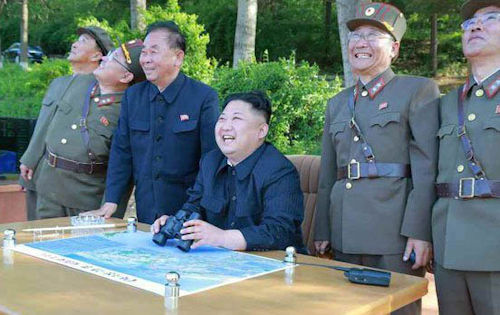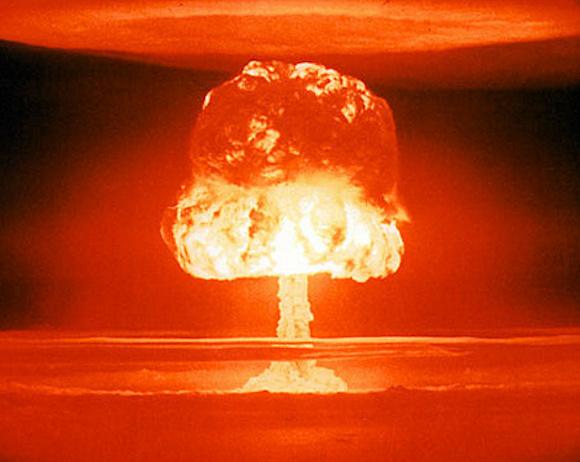The rogue statements of war between the USA and North Korea of these weeks actually mask, despite growing tension, the substantial unpreparedness of the contenders and their sponsors and allies to face the new war from the unseen and unpredictable facets.
In the era that John von Newmann first called MAD (Mutual Insured Destruction 1949-1989), nuclear was paradoxically seen as an insurance policy for peace. All the enormous wealth of studies and reflections of those decades on the symbols of deterrence and the power of nuclear dissuasion has slowly slipped into oblivion since the fall of the Berlin Wall.
There have been and there are still acts and attempts to keep under control the "monster" growth phenomenon, such as the awarding of the Nobel Peace Prize to ICAN (International Campaign to Abolish Nuclear Weapons) the goal of the revision of the nuclear non-proliferation treaty (1970), but the denunciation of the agreement with Iran by Trump just two years after its entry into force tells us long about the actual value of these deals.
In fact, Ri Yong Ho, Minister of Foreign Affairs of North Korea, has broken the banks and has hinted, 3 2017 September, that his country is ready even testing the terrible, hyper-banned hydrogen bomb. At this point, the warning signal throughout the most populous coastal area in the world between China, Korea and Japan has finally tripped. The Region is in fact a fundamental pillar not only for the global economy but also, inevitably, for strategic and military options.
The answer of the Security Advisor US General McMaster, did not wait, stating that it is time to approve and update military plans with a political plight that also seals the choice of the nuclear option, even though the implications of this act are not yet defined or clear.

The recent White Paper on Japanese Defense, immediately shared by Prime Minister Schinzo Abe, on 35 Slim Pages describes North Korea as well as its landlord - People's China, as the direct enemies of countries on the Pacific coast and highlights the possible use of nuclear power, thus highlighting that the involvement is widening in oil stain.
President Trump and General Mc Master stressed that the only acceptable solution for the United States is the denuclearization of North Korea. But everyone knows that this is impossible because "KIM STRANAMORE" has linked the survival of his regime to being an atomic power, resuming the thesis of the greatest theoretician of nuclear war - the inventive scientist of the theory of games Herman Kahn - that is who who holds nuclear power is afraid and is not attacked. Without the bomb, North Korea would be a harmless satellite country of Great China, poor and irrelevant.
As we have seen, in the course of the Cold War weapons were especially strategic, their power measured in megatons, and they had a clear deterrent character. The famous "MAD" maximized the risks and minimized the gains of a war. But no state at all (even in the most dangerous moments like the Cuba crisis) has made use of it.
Today, however, employability focuses mainly on tactical atomic bombs, from 20 kT down. The threshold for possible nuclear use has been lowered, especially considering that the arsenals of the new powers do not have orders in the megatons, but only of small-medium power. To make an example, the Pakistani weapon is less than 40 KT, the Indian one is only a little more powerful.
 Thanks also to the fact that a new generation of military do not know, like the old generals, what it means to launch the "bomb" (in a few seconds 70 thousands of evaporated, as many dead almost immediately, 400 thousands affected by radiation) slowly the most states are maturing the hypothesis that the use of tactical nuclear means could be allowed above all in the light of the declining yields of today's conflicts.
Thanks also to the fact that a new generation of military do not know, like the old generals, what it means to launch the "bomb" (in a few seconds 70 thousands of evaporated, as many dead almost immediately, 400 thousands affected by radiation) slowly the most states are maturing the hypothesis that the use of tactical nuclear means could be allowed above all in the light of the declining yields of today's conflicts.
Strategic bombers are ready in Guam, 2500 miles from Pyongyang. They will be escorted by the F15C from the US base in Okinawa and USS aircraft raids Nimitz (CVN68), Carrier Strike Group 11, USS Carl Vinson (CVN70) Strike 54, USS Ronald Reagan (CVN 76). The planes are ready, the missiles too.
There is no doubt that the nuclear issue is now all in Asia: the main atomic powers of Russia, China, India, Pakistan and the Pacific, USA, are clashing between them precisely in that region where 72 years ago early bombs on Hiroshima and Nagasaki.
And the global nuclear arsenal today is worth a million bombs equal to that decommissioned on Hiroshima.
The result today could be even more frightening: more than a million dead and contaminated in a few seconds.
Prof. Arduino Paniccia
President of ASCE - International School of Economics in Venice and Professor of Strategic Studies
(photo: US DoD / NSA)












